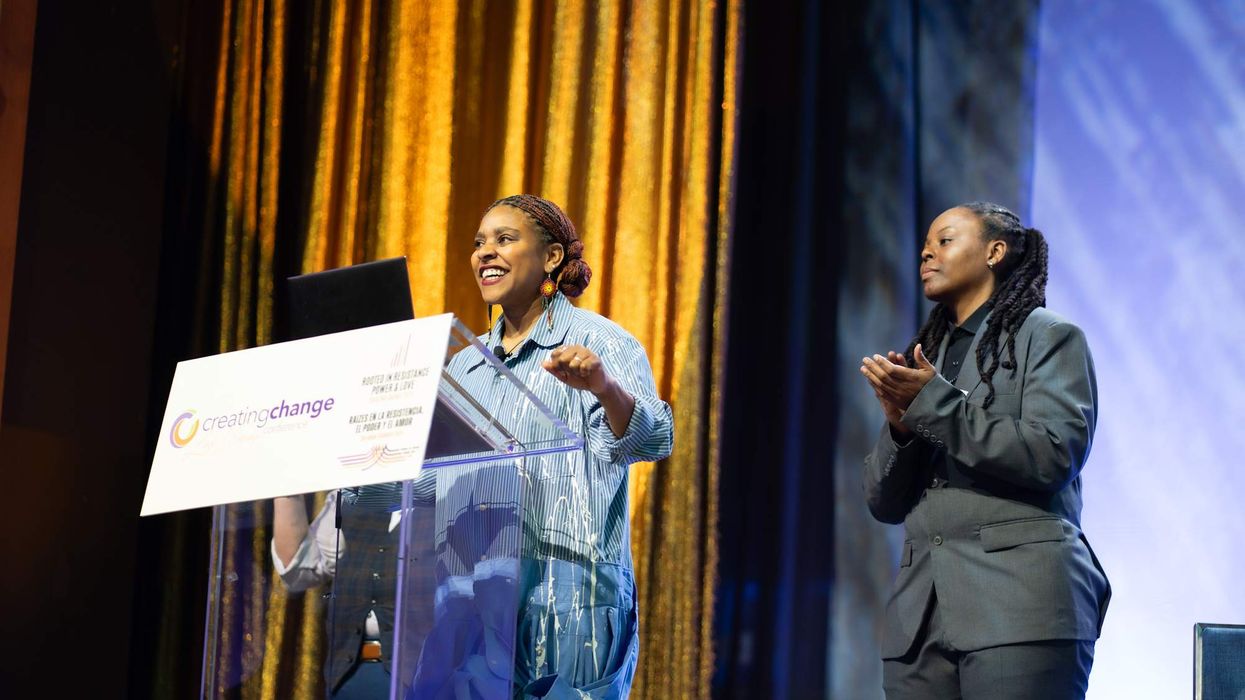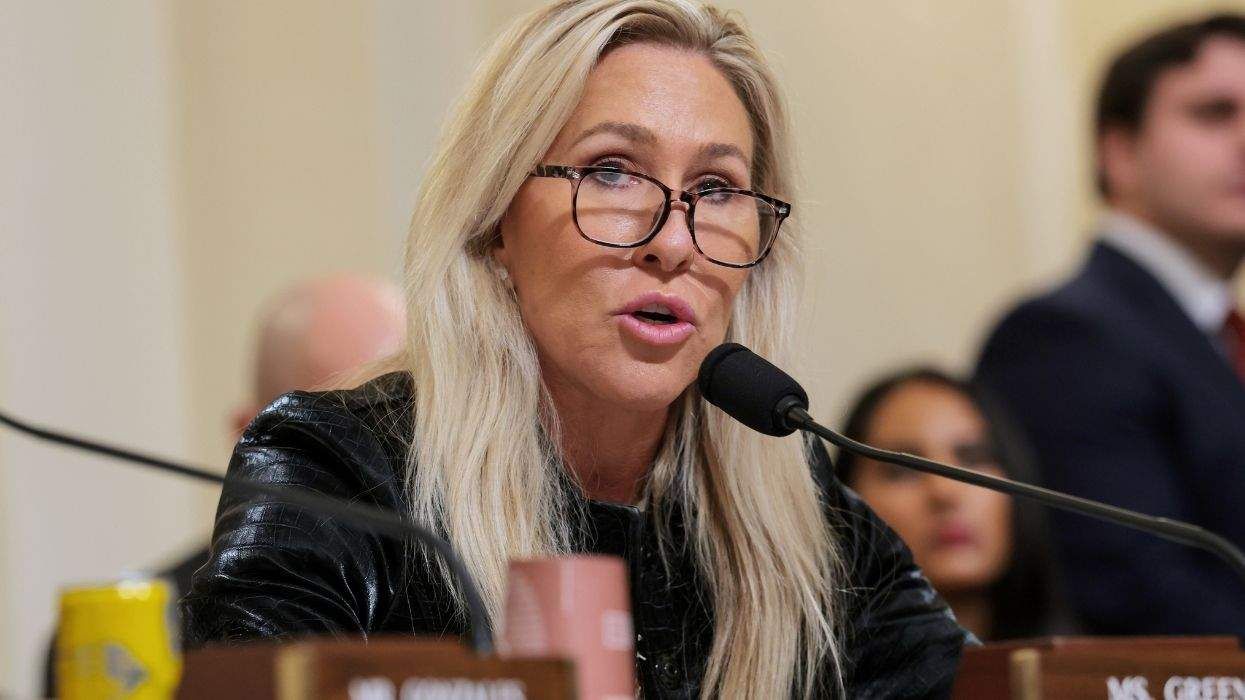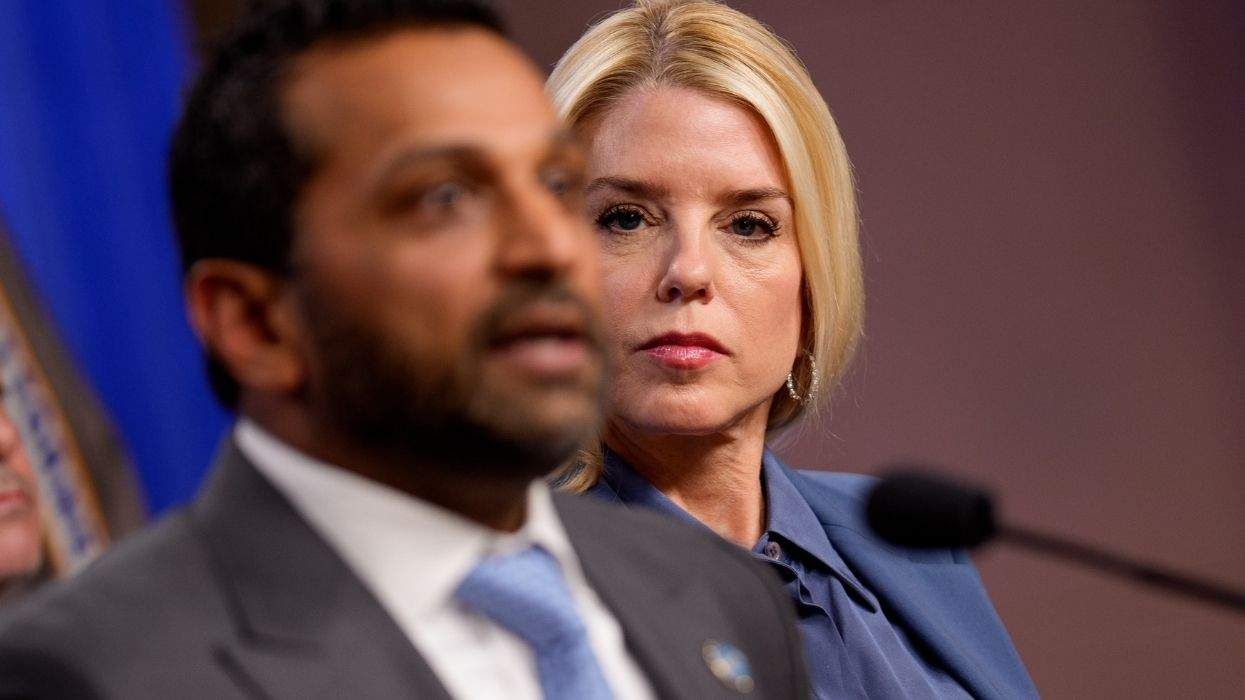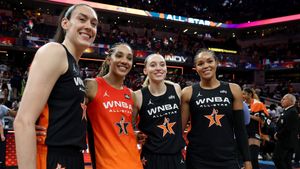June 07 2007 12:00 AM EST
CONTACTAbout UsCAREER OPPORTUNITIESADVERTISE WITH USPRIVACY POLICYPRIVACY PREFERENCESTERMS OF USELEGAL NOTICE
© 2025 Equal Entertainment LLC.
All Rights reserved
All Rights reserved
By continuing to use our site, you agree to our Privacy Policy and Terms of Use.
We need your help
Your support makes The Advocate's original LGBTQ+ reporting possible. Become a member today to help us continue this work.
Your support makes The Advocate's original LGBTQ+ reporting possible. Become a member today to help us continue this work.
"
>
"
data-page-title="
For Billie Jean King, opportunity means everything. On Tuesday she honored Purdue, Tennessee Tech, Washington State, and State University of New York at Buffalo for making gender equity a priority. The four schools were winners of the Women's Sports Foundation's inaugural ''Opportunity Awards,'' created in honor of the 35th anniversary of Title IX.
''We are still underrepresented, but we're getting there,'' said King, founder of the Women's Sports Foundation. ''We know it's invaluable to be in sports.''
Each school earned an ''A'' in a new study titled ''Who's Playing College Sports?'' that addresses college sports participation levels from 1995 to 2005.
Compiled by John Cheslock, Ph.D., of the University of Arizona in conjunction with the Women's Sports Foundation, the report looked at divisions I, II, III, and all six major college athletic organizations--NCAA, NAIA, NCCAA, NJCAA, COA, and NWAAC.
The "A" schools had a gap of two points or less in the percentage of female athletes to the female student body. An "F" required a gap of 22 points or more.
''Gender equity is a part of who we are,'' said SUNY-Buffalo athletic director Warde Manuel, whose eighth-grade daughter, Emma, is a tennis player and wants to be a pediatrician. ''Emma drives my determination to continue to provide equitable opportunities.''
A sampling of grades at prominent schools: Arizona (B+), Connecticut (B+), Colorado (B), Florida (B-), Georgia (C+), Iowa (C+), Kansas (B+), Michigan (A), Minnesota (B+), North Carolina (C-), Notre Dame (A-), Oregon (C), Rutgers (C+), Stanford (A), Temple (B-), Tennessee (B+), Texas (B+), University of Southern California (B+), Washington (A-), and Wisconsin (A-).
The NCAA earned a C.
The study indicated women's sports made steady gains in the mid 1990s, but those increases have stalled since 2001. As of 2004-2005 women made up 56% of undergraduates but only 42% of athletes. According to the report, an additional 151,000 female athletes would need to be added to reach 56%.
To comply with Title IX, a school can show proportionality of female athletes to female students on campus; a history of increasing sports for women; or prove it has met the interest and ability of the underrepresented group.
Some 87% of schools did not achieve proportionality, according to the report, and 75% did not increase the number of women's sports since 2001.
Soccer was the fastest growing sport among women, by more than 4,000 participants, followed by rowing (2,779), softball (2,203), swimming (1,630) and lacrosse (1,550).
Division II had the largest increase in women's teams, while Division I-A and I-AA had the lowest from 2001 to 2005.
''A lot of people keep thinking and reading where men's sports have been decreased, and that's not true,'' King said. ''People say 'What happened to my wrestling, what happened to my tennis program?' Well, things have shifted. It's the decision of the educational institution where they want to spend their money.''
Cheslock pointed out that almost two thirds (16 of 25) of men's sports had gains between 2001 and 2005.
''It is true that men's gymnastics, tennis, and wrestling have declined over time,'' he said. ''It's also true that in terms of participation, men's baseball, football, lacrosse, and soccer have increased by much larger amounts, meaning there's been an overall increase.''
While men's participation decreased slightly for Division I-A, it remained mostly the same in Division I-AA and Division I-AAA and grew in Division II and III.
''The only subset that experienced declines in men's sports was Division I-A, the richest institutions, 100 out of almost 2,000 schools,'' said Donna Lopiano, CEO of the Women's Sports Foundation. ''It leads you to believe it's [caused by] anything but Title IX. It's money.''
Eric Pearson, chairman of the College Sports Council, disagreed, saying his group's data suggests men's teams and numbers have declined.
''To us, this report card proves all they care about is gender quotas, and [the report card] provides a hit list for litigation,'' Pearson said. ''It focuses on one way of compliance--proportionality. There are three ways of complying, why focus on one?''
But King said the CSC's data focuses too much on one too: wrestling.
''They'll take one program that's been dropped, but they don't give the whole picture,'' she said.
King contends female athletes remain significantly underrepresented in college sports and that Title IX should not be weakened.
''Young people are the future,'' she said. ''Young girls are still underserved. We need to keep working on girls having equal opportunity.'' (AP)
King gives
schools "A" for gender equity
From our Sponsors
Most Popular
Bizarre Epstein files reference to Trump, Putin, and oral sex with ‘Bubba’ draws scrutiny in Congress
November 14 2025 4:08 PM
True
Jeffrey Epstein’s brother says the ‘Bubba’ mentioned in Trump oral sex email is not Bill Clinton
November 16 2025 9:15 AM
True
Watch Now: Pride Today
Latest Stories
Trump's FDA sends warning letters to companies selling chest binders
December 19 2025 2:31 PM
Bowen Yang to leave SNL after Ariana Grande and Cher episode
December 19 2025 2:10 PM
Notorious anti-LGBTQ+ New York Archbishop Dolan retires — here are his worst moments
December 19 2025 1:27 PM
Sarah McBride knew some Democrats would betray trans people, so she lobbied Republicans
December 19 2025 12:55 PM
Creating Change Returns to Washington D.C. for 38th Convening for LGBTQ Advocacy
December 19 2025 12:22 PM
House passes bill banning Medicaid from covering gender-affirming care for youth
December 19 2025 11:05 AM
Health policy expert to RFK Jr.: You can't ban trans youth care this way
December 18 2025 5:37 PM
12 lesbian thrillers and mysteries to binge & where to watch them
December 18 2025 4:36 PM
Netflix's 'Boots' season 2 plot revealed by producer amid cancelation
December 18 2025 4:33 PM
Charlie Kirk's accused killer, Tyler Robinson, on LGBTQ+ issues: It's complicated
December 18 2025 4:04 PM
Sacramento man still in coma six weeks after suspected anti-LGBTQ+ hate crime
December 18 2025 1:17 PM
RFK Jr. and Dr. Oz announce sweeping measures to ban gender-affirming care for trans youth
December 18 2025 12:19 PM
True
Texas city will remove rainbow crosswalks under orders from Trump administration
December 18 2025 11:07 AM
Six key takeaways from Trump's speech to the nation, including 'transgender for everybody'
December 17 2025 10:51 PM
Marjorie Taylor Greene’s bill criminalizing gender-affirming care for minors passes with Democrats’ support
December 17 2025 6:47 PM
True
I didn’t just run the world’s major marathons. I changed them
December 17 2025 4:31 PM
Pam Bondi wants FBI to offer bounties for ‘radical gender ideology’ groups, leaked memo shows
December 17 2025 3:17 PM



































































Charlie Kirk DID say stoning gay people was the 'perfect law' — and these other heinous quotes